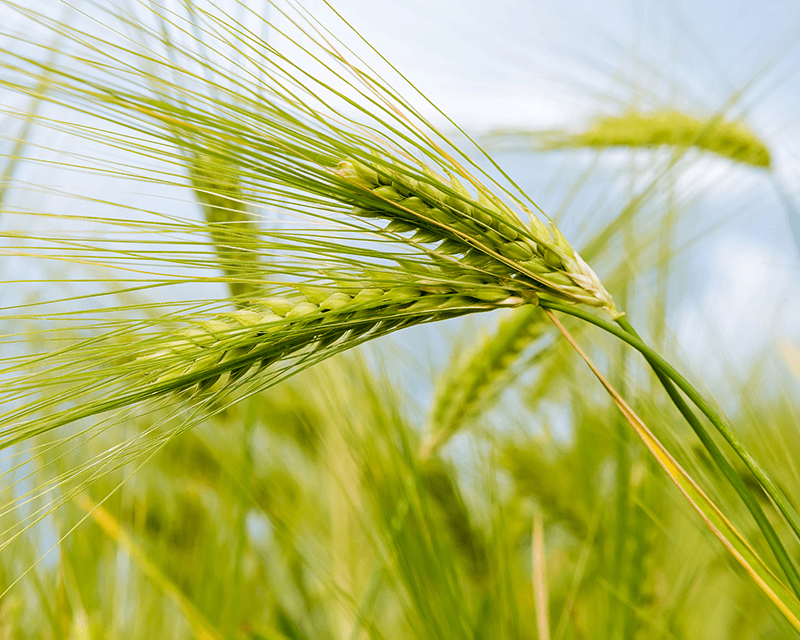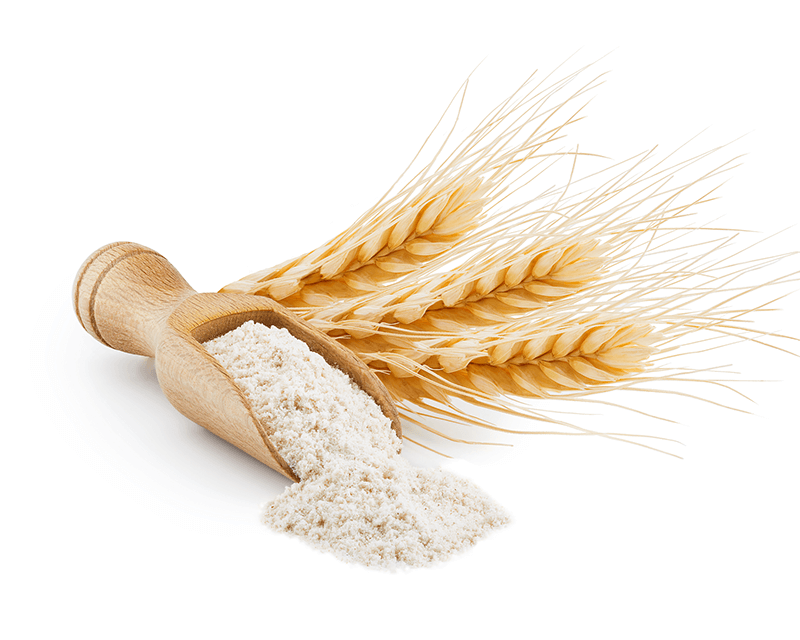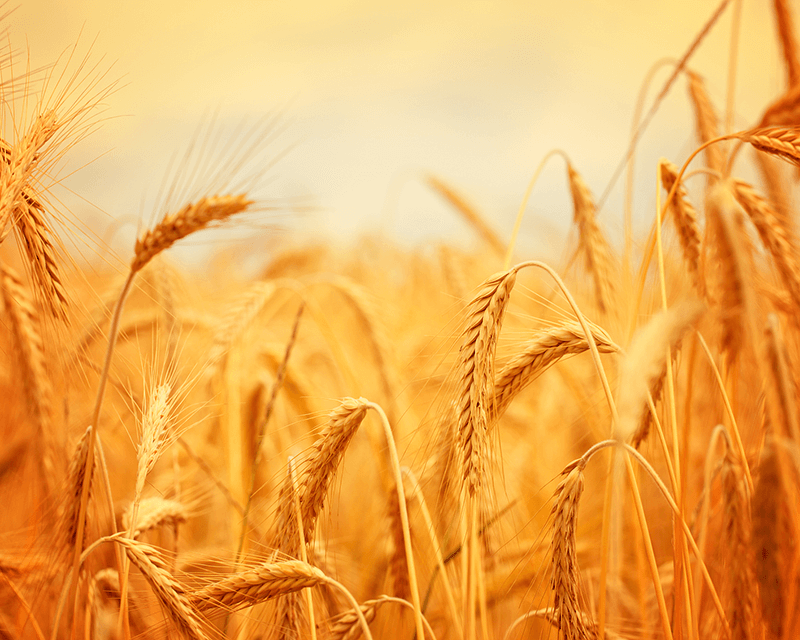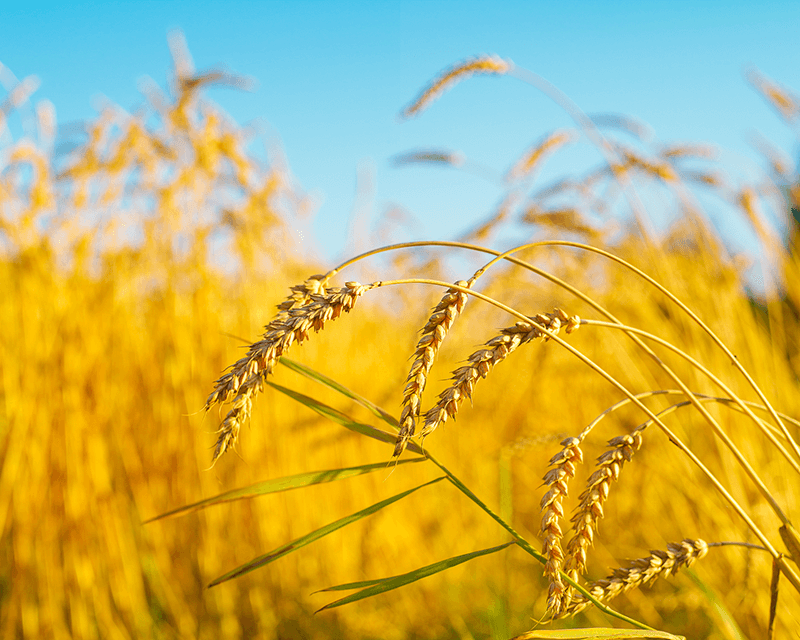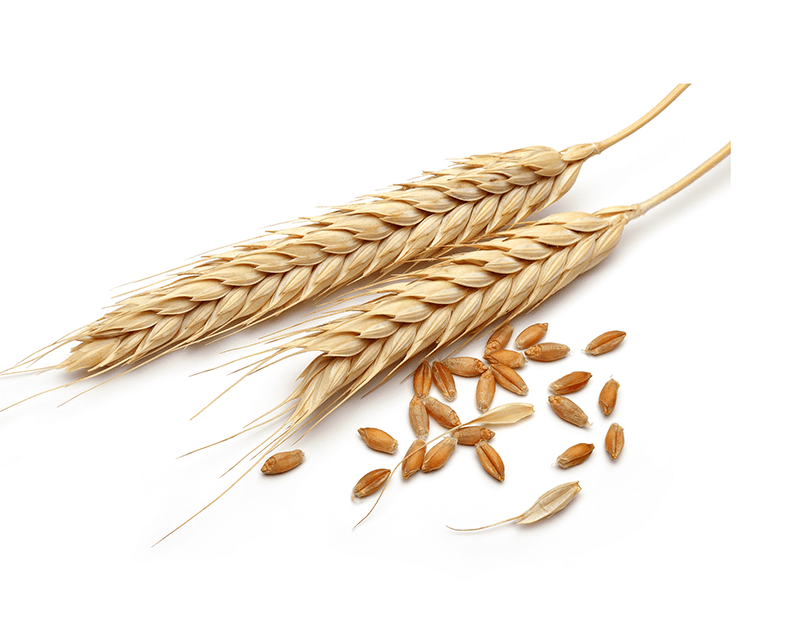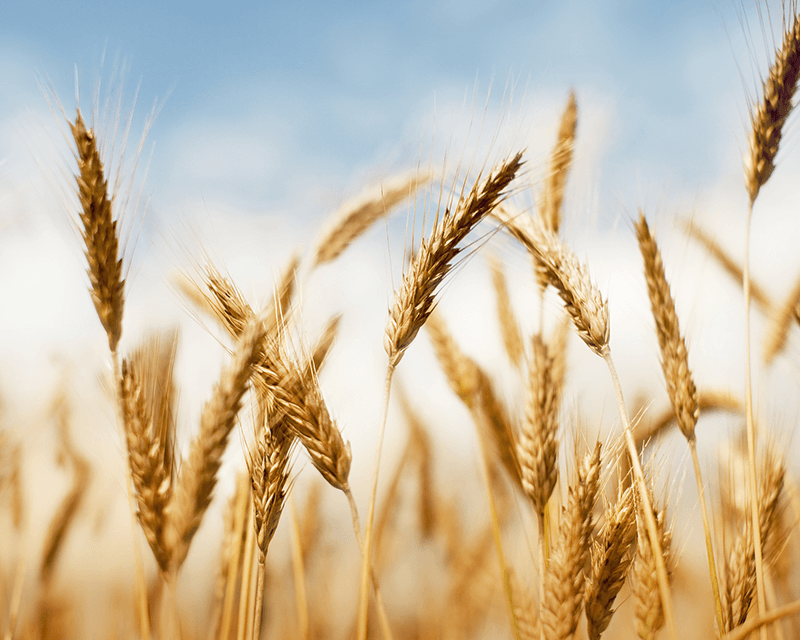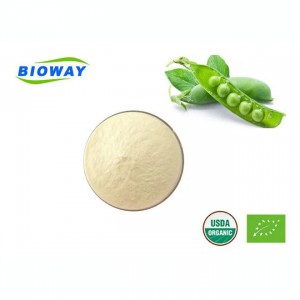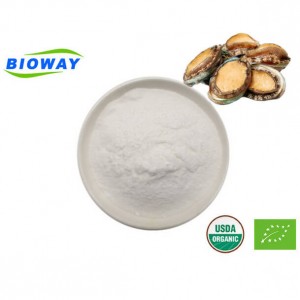Hight-quality Wheat Oligopeptide Powder
Wheat oligopeptide Powder is a type of peptide derived from wheat protein. It is a short chain of amino acids that is obtained through partial hydrolysis of wheat protein. Wheat oligopeptides are known for their small molecular size, which allows for easy absorption by the body. They are often used in supplements, functional foods, and skincare products for their potential health benefits. Wheat oligopeptides are believed to support muscle recovery, promote collagen production, and enhance skin health.
| Items | Standards |
| Appearance | Fine Powder |
| Color | creamy white |
| Assay (dry basis) | 92% |
| Moisture | <8% |
| Ash | <1.2% |
| Mesh size pass 100 mesh | >80% |
| Proteins(Nx6.25) | >80% / 90% |
Wheat oligopeptide products typically have the following features:
Nutritional Benefits: Wheat oligopeptides are known to be rich in essential amino acids, which are the building blocks of proteins. These products often claim to provide added nutritional support by supplementing your diet with these beneficial compounds.
Muscle Recovery Support: Wheat oligopeptides are often marketed as a way to support muscle recovery after workouts. They are believed to help repair damaged muscle tissue and reduce muscle soreness, making them popular among athletes and fitness enthusiasts.
Collagen Production Enhancement: Some wheat oligopeptide products claim to stimulate collagen production in the skin. Collagen is a protein that helps maintain the elasticity and firmness of the skin, and increased production may aid in reducing the appearance of wrinkles and promoting overall skin health.
Easy Absorption: Wheat oligopeptides have a small molecular size, allowing for easy absorption by the body. This feature is often highlighted by manufacturers, emphasizing that their products deliver the benefits of wheat oligopeptides quickly and effectively.
Multiple Application Options: Wheat oligopeptides can be found in various forms, including supplements, functional foods, and skincare products. This versatility allows consumers to choose the format that best fits their lifestyle and preferences.
It is always important to read product labels and consult with a healthcare professional before using any new supplements or skincare products, especially if you have any allergies or intolerances.
Wheat oligopeptides are short chains of amino acids derived from wheat proteins. While they are often marketed for their potential health benefits, it is important to note that scientific research on wheat oligopeptides specifically is limited. However, here are some potential health benefits associated with wheat oligopeptides based on general knowledge of amino acids and proteins:
Amino Acid Source: Wheat oligopeptides are a source of essential amino acids, which are crucial for various biological processes in the body. Amino acids are the building blocks of proteins and play vital roles in muscle repair, immune function, hormone production, and more.
Muscle Recovery: Amino acids, including those found in wheat oligopeptides, are believed to support muscle recovery after exercise. They may help repair damaged muscle tissue, reduce muscle soreness, and aid in the synthesis of new proteins that contribute to muscle growth and repair.
Digestive Health: Some studies suggest that certain amino acids found in wheat oligopeptides, such as glutamine, may support digestive health. Glutamine is known to be beneficial for the integrity of the intestinal lining and may help alleviate conditions like leaky gut syndrome.
Skin Health: Wheat oligopeptides are sometimes used in skincare products due to their potential role in collagen synthesis. Collagen is a protein that contributes to skin elasticity and firmness. Supporting collagen production may help maintain healthy skin and reduce signs of aging.
Antioxidant Effects: Wheat oligopeptides, particularly those derived from wheat gluten, may possess antioxidant properties. Antioxidants help neutralize harmful free radicals in the body, which can contribute to various health conditions and aging.
It is worth mentioning that individual responses to wheat oligopeptide products may vary, and more research is needed to understand their specific health benefits and potential side effects fully. If you have any concerns or specific health conditions, consult with a healthcare professional before incorporating wheat oligopeptides into your diet or skincare routine.
Wheat oligopeptide products find applications in various fields, including:
Food and Beverage Industry: Wheat oligopeptides can be used as an ingredient in functional foods and beverages. These products often highlight the nutritional benefits of wheat oligopeptides, such as their amino acid content and potential health-promoting properties. They may be added to protein bars, drinks, or pre-workout supplements to enhance their nutritional profile.
Sports Nutrition: Wheat oligopeptide products are popular among athletes and fitness enthusiasts as they are believed to aid in muscle recovery and support post-workout nutrition. These products can be consumed in the form of protein powders or capsules to help build and repair muscles after intense workouts.
Skincare and Cosmetics: Wheat oligopeptides are also incorporated into skincare and cosmetic products due to their potential collagen-stimulating properties. They may be found in creams, serums, and masks, aiming to improve skin elasticity, and firmness, and reduce the appearance of wrinkles.
Nutraceuticals and Supplements: Wheat oligopeptide extracts or supplements are taken for their potential health benefits. These products may be marketed as supplements to support overall well-being, boost protein intake, or promote specific health conditions.
Animal and Aquaculture Feed: Wheat oligopeptides can also be used as a nutritional additive in animal and aquaculture feed. These products are believed to enhance nutrient absorption, improve growth, and support the overall health of livestock and aquatic animals.
It's essential to note that specific regulations and guidelines vary by country regarding the use of wheat oligopeptides in different applications. Always ensure compliance with local regulations before using or marketing any products containing wheat oligopeptides.
The production process for wheat oligopeptides typically involves several steps. Here is a general outline of how wheat oligopeptides are produced:
Extraction: The first step involves obtaining the wheat protein source, usually wheat gluten or wheat germ. Wheat gluten is separated from wheat flour by mixing the flour with water to form a dough and washing it, while wheat germ is obtained by grinding wheat grains.
Hydrolysis: The extracted wheat protein is then subjected to hydrolysis, which breaks down the long protein chains into shorter chains called oligopeptides. This can be achieved through various methods such as enzymatic hydrolysis, chemical hydrolysis, or fermentation.
Enzymatic hydrolysis: In this method, specific enzymes, such as proteases or peptidases, are added to the wheat protein solution. These enzymes act on the protein chains, breaking them down into oligopeptides.
Chemical hydrolysis: Chemical reagents, such as acids or bases, can be used to hydrolyze the wheat protein. The protein solution is treated with the chosen reagent under controlled conditions to cleave the protein chains into oligopeptides.
Fermentation: In some cases, fermentation techniques can be employed to produce wheat oligopeptides. This involves the use of microorganisms, such as bacteria or yeast, which produce enzymes that break down the wheat protein into oligopeptides during the fermentation process.
Filtration and Purification: Once the hydrolysis is complete, the mixture is typically subjected to filtration to remove any solid particles or undigested proteins. Further purification processes, such as ultrafiltration or chromatography, may be employed to isolate and concentrate the desired oligopeptides.
Drying and Powdering: The purified wheat oligopeptides are then dried to remove excess moisture. This is usually done using techniques like spray drying, freeze drying, or vacuum drying. The dried oligopeptides are then ground into a fine powder, making them easier to handle and incorporate into various products.
It is important to note that the specific production process may vary depending on the manufacturer and the desired characteristics of the wheat oligopeptides. It is also worth mentioning that the production of wheat oligopeptides derived from wheat gluten may not be suitable for individuals with gluten intolerance or celiac disease, as the gluten proteins may remain present in the final product.
Storage: Keep in a cool, dry, and clean place, Protect from moisture and direct light.
Bulk Package: 25kg/drum.
Lead Time: 7 days after your order.
Shelf Life: 2 years.
Remark: Customized specifications also can be achieved.
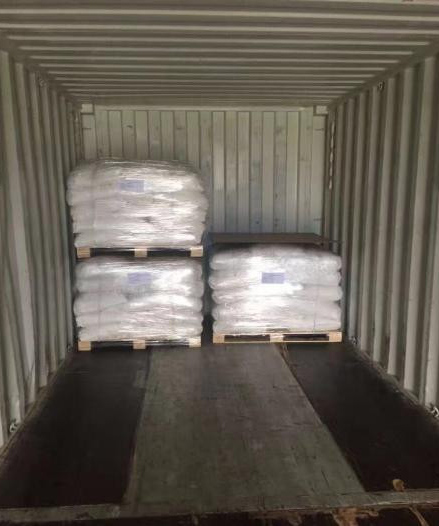
20kg/bag 500kg/pallet

Reinforced packaging

Logistics security
Express
Under 100kg, 3-5Days
Door to door service easy to pick up the goods
By Sea
Over300kg, Around 30 Days
Port to port service professional clearance broker needed
By Air
100kg-1000kg, 5-7Days
Airport to airport service professional clearance broker needed

Wheat Oligopeptide is certified with the NOP and EU organic, ISO certificate, HALAL certificate, and KOSHER certificate.

While wheat oligopeptide products are generally considered safe for consumption, there are a few precautions to keep in mind:
Allergies: Wheat is a common allergen, and individuals with known wheat allergies or sensitivities should exercise caution when consuming products containing wheat oligopeptides. In such cases, it is advisable to consult with a healthcare professional before using wheat oligopeptide products.
Gluten Intolerance: Individuals with celiac disease or gluten intolerance should be aware that wheat oligopeptides may contain gluten. Gluten is a protein found in wheat and can cause adverse reactions in those with gluten-related disorders. It is important to carefully read product labels and look for gluten-free certifications if necessary.
Quality and Source: When purchasing wheat oligopeptide products, it is crucial to choose reputable brands that prioritize quality and source their ingredients responsibly. This helps ensure the purity and safety of the products and reduces the risk of contamination or adulteration.
Dosage and Usage: Follow the recommended dosage and usage instructions provided by the manufacturer. Exceeding the recommended dose may not provide additional benefits and could potentially lead to adverse effects.
Interactions and Medications: If you have any underlying health conditions or are taking medications, it is advisable to consult with a healthcare professional before incorporating wheat oligopeptides into your routine. This helps to identify any potential interactions or contraindications.
Pregnancy and Breastfeeding: Limited information is available regarding the safety of wheat oligopeptides during pregnancy and breastfeeding. It is recommended to consult with a healthcare professional for personalized advice in these situations.
As with any dietary supplement or new product, it is always important to consider individual health circumstances, preferences, and consult with a healthcare professional if needed.










